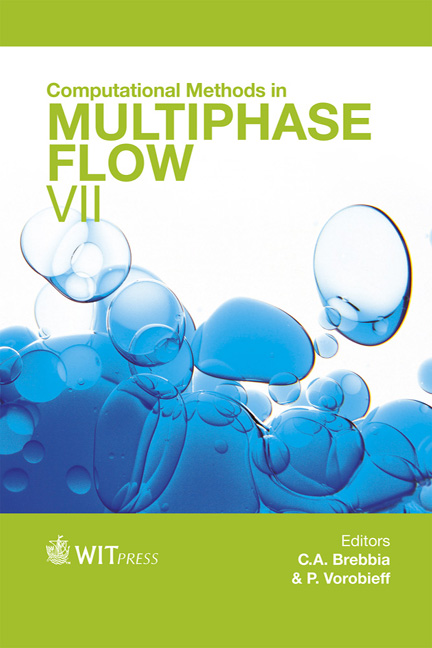One-dimensional Turbulent Mass Transfer At Air-water Interfaces: Details Of Discontinuities Of Derivatives Using The RSW Method
Price
Free (open access)
Transaction
Volume
79
Pages
12
Page Range
365 - 376
Published
2013
Size
635 kb
Paper DOI
10.2495/MPF130301
Copyright
WIT Press
Author(s)
B. B. Gonçalves & H. E. Schulz
Abstract
The one-dimensional turbulent mass transfer was quantified using the nonlinear unclosed statistical governing equations derived from the traditional statistical methods. Further, this study considers the a priori simplifications of the bimodal Random Square Waves (RSW) approximation. This model enables the formulation of parametric equations for the variables of the statistical governing equations, but intrinsic aspects of this method still need to be clarified. In this sense, this study considers details of a version of the RSW equation for turbulent mass transfer which uses a constant reduction function. The mentioned details are related to discontinuities of higher order derivatives of the nondimensional concentration profile in the vicinity of a singular point. Numerical integrations were conducted at the air-water interface in both directions: from the liquid to the gas phase, and from the gas to the liquid phase. The results suggest that the continuity and smoothness of the calculated concentration profile does not depend on the discontinuities of the higher order derivatives, but the behaviour of the higher order derivatives depends strongly on the values of the nondimensional parameters existing in the formulation. Adequate boundary conditions were defined in the liquid phase, involving a new condition for the second derivative of the concentration profile. A fourth order Runge-Kutta method was used. This paper presents the proposed methodology; the comparison between results of calculated and measured concentration profiles,
Keywords
turbulent flows, interfacial mass transfer, RSW method





